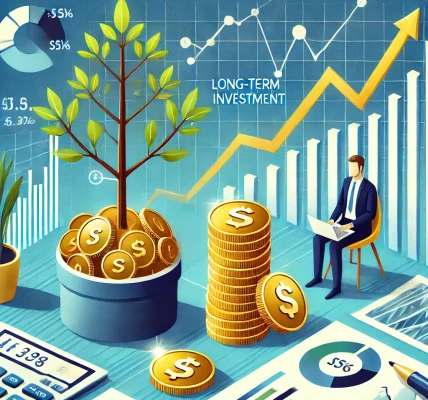Introduction
In the fast-paced world of stock markets, traders are constantly seeking the most effective ways to maximize profits while minimizing risks. Two primary trading methods dominate the financial landscape: algorithmic trading and manual trading. While both approaches have their advantages and drawbacks, choosing the right one depends on factors such as strategy, risk appetite, market conditions, and technological capabilities.
This article provides a comprehensive comparison of algorithmic trading and manual trading, highlighting their pros and cons, and helping you decide which method suits your needs best.
What is Algorithmic Trading?
Algorithmic trading, also known as algo trading or automated trading, involves using computer programs and algorithms to execute trades based on pre-defined rules. These algorithms analyze market data, identify opportunities, and execute trades at high speed with minimal human intervention.
Pros of Algorithmic Trading
- Speed & Efficiency: Algorithms can process vast amounts of data and execute trades within milliseconds, making it ideal for high-frequency trading.
- Eliminates Emotional Bias: Trading decisions are based on logic and predefined rules, eliminating emotional interference.
- Backtesting & Optimization: Algorithms can be tested on historical data to improve performance before real-world implementation.
- Consistency & Accuracy: Unlike human traders, algorithms do not suffer from fatigue or inconsistency, ensuring precise trade execution.
- Multi-Asset Trading: Algorithms can trade across multiple markets and asset classes simultaneously, optimizing portfolio management.
Cons of Algorithmic Trading
- Complexity & Development Cost: Building and maintaining algorithms require programming skills and significant investment in infrastructure.
- Risk of Technical Failures: System glitches, software bugs, or connectivity issues can lead to significant financial losses.
- Over-Optimization Risk: Excessive reliance on backtesting may create an illusion of profitability, which might not translate to live trading.
- Regulatory Challenges: Algorithmic trading is subject to strict regulations to prevent market manipulation, requiring compliance with legal frameworks.
- Market Impact Risks: High-frequency trading algorithms can sometimes exacerbate market volatility during rapid price fluctuations.
What is Manual Trading?
Manual trading involves human traders making buy and sell decisions based on market research, technical analysis, and personal experience. Traders analyze charts, news, and economic indicators to determine the best entry and exit points.
Pros of Manual Trading
- Flexibility & Adaptability: Human traders can adapt to sudden market changes and unexpected news events.
- Intuition & Experience: Unlike algorithms, experienced traders can use gut feelings and market sentiment to make informed decisions.
- Lower Initial Costs: Unlike algo trading, manual trading does not require advanced programming skills or expensive infrastructure.
- Better Risk Management: Traders can adjust their strategies dynamically, considering external factors that algorithms might overlook.
- Simplicity: Manual trading does not require complex coding or backtesting, making it more accessible to beginners.
Cons of Manual Trading
- Slower Execution: Human reaction times are significantly slower than algorithms, leading to potential missed opportunities.
- Emotional Influence: Greed, fear, and overconfidence can lead to irrational trading decisions and losses.
- Limited Scalability: A manual trader can only focus on a few assets at a time, limiting trading opportunities.
- Fatigue & Human Error: Prolonged trading sessions can lead to fatigue, increasing the risk of mistakes.
- Inconsistent Performance: Unlike algorithms, human traders may struggle to maintain consistency due to psychological and physical limitations.
Algorithmic Trading vs. Manual Trading: Side-by-Side Comparison
| Feature | Algorithmic Trading | Manual Trading |
|---|---|---|
| Execution Speed | Extremely Fast | Slower |
| Emotional Influence | None | High |
| Cost & Development | High Initial Cost | Low Initial Cost |
| Market Adaptability | Limited to predefined rules | Highly adaptable |
| Risk Management | Automated & Rule-Based | Manual & Subjective |
| Scalability | High (Multiple Markets) | Low (Limited Focus) |
| Learning Curve | Requires Programming Skills | Easier for Beginners |
| Backtesting | Possible & Reliable | Not Possible |
| Fatigue | None | Present |
| Human Error | None | High Probability |
Which One Should You Choose?
The choice between algorithmic trading and manual trading depends on several factors, including experience, trading goals, capital, and technological expertise.
Choose Algorithmic Trading If:
- You have strong programming skills or access to professional algo trading software.
- You want to trade at high frequency and capitalize on small price movements.
- You aim for consistency and precision without emotional interference.
- You have sufficient capital to invest in technology and infrastructure.
- You prefer a data-driven, analytical approach to trading.
Choose Manual Trading If:
- You are a beginner and want to understand market dynamics before automating trades.
- You prefer a hands-on approach and trust your intuition in decision-making.
- You trade infrequently or focus on long-term investments.
- You want full control over your trades without relying on software.
- You find joy and excitement in active market participation.
Hybrid Approach: The Best of Both Worlds
For many traders, a hybrid approach that combines both algorithmic and manual trading can be the most effective strategy. Some traders use algorithms for entry and exit signals while making final trade decisions manually. Others automate routine tasks while retaining human oversight for risk management and strategy adjustments.
Conclusion
Both algorithmic trading and manual trading have their unique advantages and disadvantages. Algorithmic trading is ideal for those who seek speed, efficiency, and automation, while manual trading suits traders who prefer flexibility, intuition, and hands-on decision-making. Ultimately, the best choice depends on your personal trading style, experience level, and financial goals.
Before committing to either approach, it is crucial to educate yourself, test strategies, and ensure compliance with financial regulations to avoid legal issues. Whether you choose algorithmic trading, manual trading, or a hybrid model, the key to success lies in disciplined risk management and continuous learning.
Frequently Asked Questions (FAQs)
1. Is algorithmic trading legal?
Yes, algorithmic trading is legal in most countries, but traders must comply with financial regulations to prevent market manipulation and ensure transparency.
2. Can beginners start with algorithmic trading?
Beginners can start with algorithmic trading, but it requires programming knowledge and a strong understanding of market dynamics.
3. Which trading method is more profitable?
Profitability depends on market conditions, strategy, and execution. Both methods can be profitable if implemented correctly.
4. What are the risks of algorithmic trading?
Risks include technical failures, over-optimization, regulatory restrictions, and market impact during high volatility.
5. How can I learn algorithmic trading?
You can learn algorithmic trading through online courses, financial books, coding tutorials, and trading simulators.
By carefully evaluating your options and continuously refining your skills, you can make informed trading decisions that align with your financial goals.




